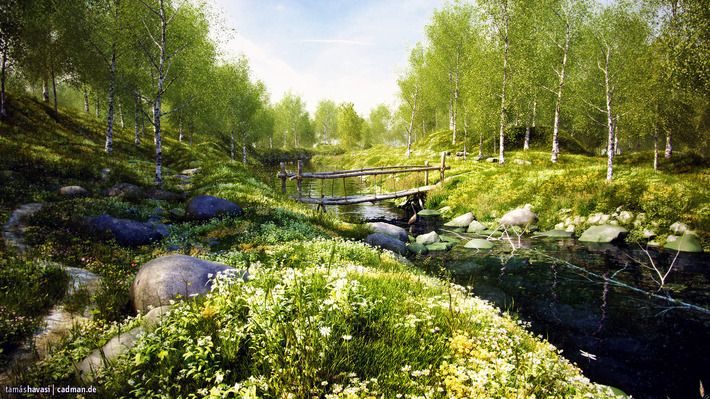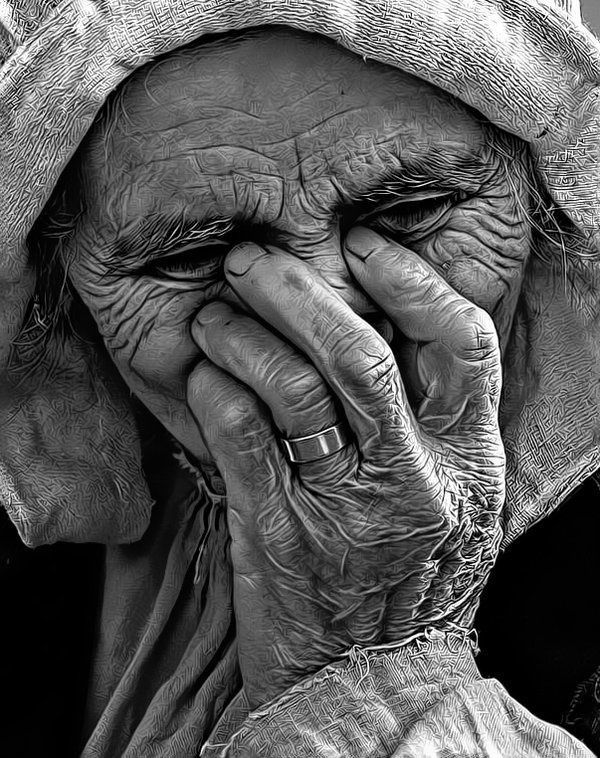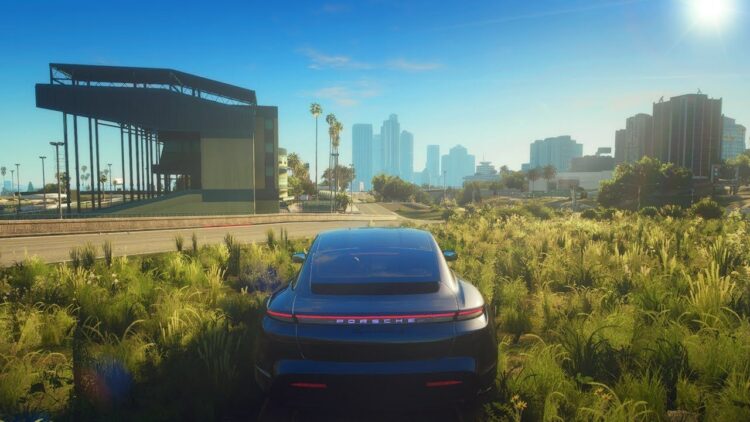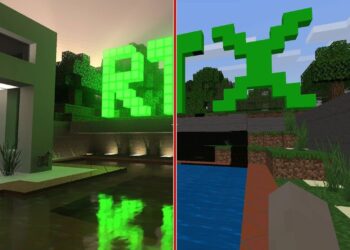For decades, the holy grail of digital graphics has been a simple, yet profoundly complex, goal: photorealism. It’s the dream of creating a virtual world so visually indistinguishable from our own that the lines between the real and the rendered completely blur. We’ve seen glimpses of this future in pre-rendered movie CGI and meticulously crafted tech demos that seemed like distant fantasies. But the fantasy is rapidly solidifying into reality. We are standing at the precipice of a revolution, a paradigm shift where real-time photorealistic graphics are no longer a question of if, but when—and the answer is “sooner than you think.”
This isn’t a gradual, incremental step forward. It is a monumental leap, powered by a convergence of groundbreaking technologies that are fundamentally rewriting the rules of real-time rendering. From the way light is simulated to the very geometry that builds our virtual worlds, every component of the graphics pipeline is being reinvented. This transformation is set to redefine not only video games but also filmmaking, architecture, product design, and countless other industries.
This in-depth article will serve as your comprehensive guide to the imminent age of photorealism. We will dissect the core technologies making this possible, explore the software engines that are harnessing their power, address the significant challenges that remain, and look beyond gaming to the far-reaching implications of a world rendered in perfect fidelity. Prepare to explore the future of graphics—a future that is arriving now.
Redefining the Goal: What Is True Photorealism?
Before we dive into the technology, it’s crucial to understand what “photorealism” truly means in this context. It’s a term often used loosely, but its technical meaning is far more profound than simply “looking really good.” True photorealism is the accurate simulation of physics, primarily the physics of light and its interaction with matter.
For a digital scene to be truly photorealistic, it must master several key elements:
- Light Simulation: Light in the real world bounces, reflects, refracts, and scatters in infinitely complex ways. A red wall will cast a subtle red hue on a white floor next to it. Sunlight filtering through a stained-glass window will accurately project its colors and patterns. This behavior, known as Global Illumination, is paramount.
- Material Authenticity: Every material reacts to light differently. The soft, diffuse reflection on unpolished wood is vastly different from the sharp, mirror-like reflection on chrome. The way light scatters beneath the surface of human skin (subsurface scattering) is essential for creating believable characters. This requires a deep, physics-based understanding of materials.
- Infinite Detail: The real world has no “polygon budget.” A rocky cliffside is composed of billions of tiny, complex surfaces, not a simplified 3D model with a flat texture applied to it. True photorealism requires the ability to render near-infinite geometric detail without compromise.
- Dynamic Realism: The world isn’t static. Realism is maintained through motion, with objects, shadows, and light all reacting dynamically and correctly to changes in the environment in real-time.
Achieving this in real-time (i.e., at 30, 60, or even 120 frames per second) has been the single greatest challenge for the graphics industry. Now, a collection of technologies has finally reached maturity, forming the pillars of this new era.
The Technological Pillars of the Photorealism Revolution

This leap forward isn’t happening because of one single invention. It’s a powerful synergy of several key innovations working in concert. Let’s break down the most important pillars.
A. Path Tracing: The Ultimate Simulation of Light
For years, real-time graphics have relied on a clever set of “cheats” and approximations called rasterization. Rasterization is incredibly fast and efficient, but it struggles to accurately simulate the complex behavior of light, requiring developers to “bake” lighting into scenes or use tricks to simulate reflections and shadows.
The future is Ray Tracing, and more specifically, its advanced form: Path Tracing.
- Ray Tracing Explained: Instead of faking it, ray tracing simulates the path of individual rays of light from a source (like the sun) as they travel through a scene. It calculates how these rays bounce off surfaces, pass through transparent objects like glass, and create accurate reflections and shadows. The result is a level of realism in lighting that rasterization could never achieve.
- Path Tracing: The Next Level: Path tracing is an even more advanced form of ray tracing that simulates the entire path of light, including countless bounces. This is how a scene achieves perfect Global Illumination, where every object correctly illuminates every other object around it. It produces incredibly soft and realistic shadows, color bleeding, and ambient lighting that feels completely natural. Once the exclusive domain of Hollywood CGI farms that took hours to render a single frame, path tracing is now becoming possible in real-time, as seen in groundbreaking updates like Cyberpunk 2077’s Overdrive Mode.
B. Virtualized Geometry: The End of Polygons as a Limit
Every object in a video game is made of polygons (typically triangles). Historically, developers have been constrained by a “polygon budget.” Too many polygons in a scene would overwhelm the hardware, forcing them to use lower-detail models and clever texture work to create the illusion of complexity.
Epic Games’ Unreal Engine 5 introduced a revolutionary technology called Nanite that effectively eliminates this limitation.
- Nanite Explained: Nanite is a virtualized micropolygon geometry system. In simple terms, it allows developers to import 3D models and assets with tens of millions of polygons—the same “film-quality” assets used in movies—directly into the game engine. Nanite then intelligently streams and renders only the detail the player can actually perceive, down to the individual pixel level. This means a developer can design a massive, intricate cliffside, and the engine will render it with perfect detail up close and scale it down seamlessly in the distance, all with virtually zero performance overhead. This technology single-handedly solves the problem of geometric detail, paving the way for worlds of unprecedented complexity.
C. Real-Time Global Illumination: Lighting the World Dynamically
As mentioned, Global Illumination (GI) is the key to realistic lighting. While path tracing is the ultimate solution, fully path-traced scenes are still incredibly demanding. To bridge the gap, engines have developed stunning real-time GI systems.
Unreal Engine 5’s Lumen is the leading example.
- Lumen Explained: Lumen is a fully dynamic Global Illumination and reflections system. It allows light to react in real-time to any changes in the scene. If you open a door in a dark room, sunlight will realistically flood in and bounce around the interior, illuminating the space naturally. If you turn on a flashlight, its beam will bounce off surfaces and light up the environment with incredible accuracy. This eliminates the old, static “baked” lighting that would break immersion the moment something in the world changed. Systems like Lumen are the backbone of dynamic photorealistic environments.
The Accelerator: How AI Is Making the Impossible Possible
These new technologies are astonishingly powerful, but they are also incredibly demanding on hardware. This is where Artificial Intelligence and Machine Learning step in, acting as a crucial performance accelerator. The primary application of this is AI-powered image reconstruction.
Leading technologies like NVIDIA’s DLSS (Deep Learning Super Sampling), AMD’s FSR (FidelityFX Super Resolution), and Intel’s XeSS (Xe Super Sampling) are the magic ingredient.
Here’s how they work:
- Render Internally at a Lower Resolution: The game renders a frame at a lower, more manageable resolution (e.g., 1080p). This saves a massive amount of processing power.
- AI Reconstruction: A dedicated AI algorithm, which has been trained on thousands of ultra-high-quality images, then intelligently reconstructs the image to a higher target resolution (e.g., 4K).
- Stunning Results: The algorithm is so effective that the final upscaled image is often visually indistinguishable—and sometimes even sharper and more detailed—than a native 4K image, all while providing a massive boost in frame rates.
AI upscaling is the key that unlocks the door. It makes running incredibly demanding features like full path tracing at playable frame rates a reality for consumers, effectively giving gamers a “free” performance upgrade through intelligent software.
The Reality Check: Hurdles on the Road to Perfection
While the future is bright, the path to universal photorealism is not without its challenges. We must acknowledge the significant hurdles that the industry and consumers still face.
A. The Uncanny Valley: This is a well-known phenomenon in robotics and CGI. As a digital human becomes more and more realistic, our brains notice the tiny, subtle imperfections, causing a feeling of unease or revulsion. Perfecting human rendering—including micro-expressions, realistic eye movement, and natural skin blemishes—is arguably the final and most difficult frontier of photorealism.
B. The Hardware Arms Race: Photorealistic graphics require immense computational power. While AI upscaling helps tremendously, the demand for more powerful GPUs (Graphics Processing Units), CPUs, and faster memory continues to grow. This leads to expensive hardware, potentially pricing many consumers out of the high-end experience and creating a wider gap between low-end and high-end visuals.
C. The Soaring Cost of Development: Creating photorealistic assets and building these incredibly detailed worlds is an astronomical undertaking. The time, talent, and financial resources required are immense. This could lead to even longer development cycles for AAA games (we’re already seeing 5-10 year cycles), increased game prices, and a greater risk of studios playing it safe with established franchises rather than innovating with new ideas.
Beyond Gaming: A Revolution for All Industries

The impact of real-time photorealism extends far beyond the realm of entertainment. We are on the verge of seeing these technologies transform how many professional industries operate.
- Filmmaking: Virtual production, where actors perform on sets surrounded by massive LED screens displaying photorealistic virtual environments, is already becoming standard. This allows directors to shoot “on location” anywhere in the world (or galaxy) from a single studio.
- Architecture & Real Estate: Architects and clients will be able to walk through a photorealistic model of a building before a single brick is laid, making changes to lighting, materials, and layout on the fly.
- Automotive & Product Design: Engineers and designers can visualize and interact with a perfectly rendered virtual prototype of a new car or product, testing its aesthetics and functionality in a simulated environment.
- Training & Simulation: From surgical training for doctors to complex flight simulations for pilots, photorealistic graphics will provide a level of immersion that makes training safer, more effective, and more accessible.
Conclusion: A New Era of Digital Experience
We are at a historic inflection point. The convergence of real-time path tracing, virtualized geometry, dynamic global illumination, and AI acceleration is not just improving graphics; it is fundamentally changing the potential of digital interaction. The long-promised dream of photorealism is no longer a distant vision—it is being realized right now.
The journey ahead will still have its challenges, from overcoming the uncanny valley to managing the ballooning costs of development. But the technological foundation has been laid. The coming years will see virtual worlds of breathtaking beauty and staggering detail become the new standard, blurring the lines between the digital and the real in ways we’ve only ever imagined. The revolution is here, and it will be rendered in perfect, photorealistic detail.












